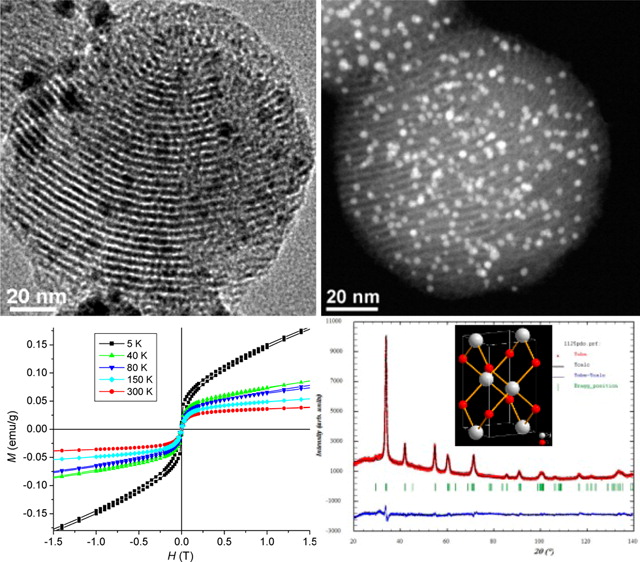

Synthesis and magnetic behavior of matrix-supported Pd and PdO nanoparticles (NPs) are described. Mesoporous silica with hexagonal columnal packing is selected as a template and impregnation method with thermal annealing is used to obtain supported Pd and PdO NPs. Heating rate and the annealing condition determine particle size and the phase of NPs, with fast heating rate of 30 °C/min producing largest supported Pd NPs. Unusual magnetic behaviors are observed. 1) Contrary to the general belief that smaller Pd NPs or cluster size particles have higher magnetization, matrix-supported Pd NPs in this study maintain highest magnetization with room temperature ferromagnetism when the size is largest. 2) Twin boundaries along with stacking defaults are more pronounced in these large Pd NPs, and are believed the reason for this high magnetization. Similarly, supported PdO NPs were prepared under air condition with different heating rate. Their phase is tetragonal (P42/mmc) with a cell parameter of a = 3.050 Å and c = 5.344 Å, which are slightly larger than in the bulk phase (a = 3.03 Å, c = 5.33 Å). Faster heating rate of 30 °C/min also produces larger particles and these particles main-tain ferromagnetism with hysteresis loop, although magnetization is smaller and few twin boundaries are observed com-pared to the supported metallic Pd NPs.
